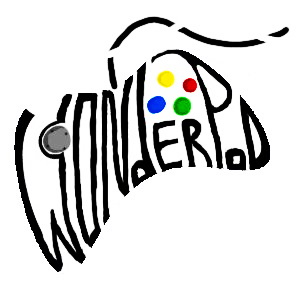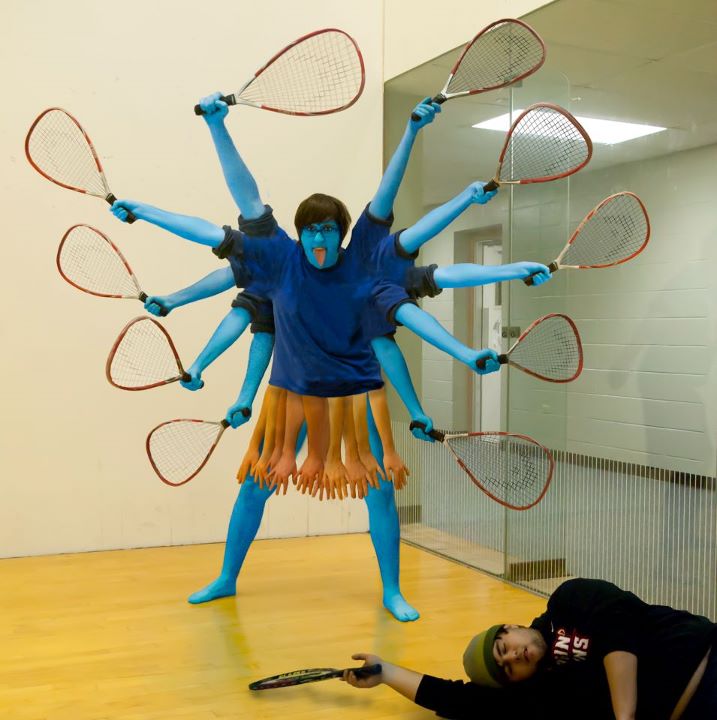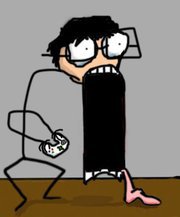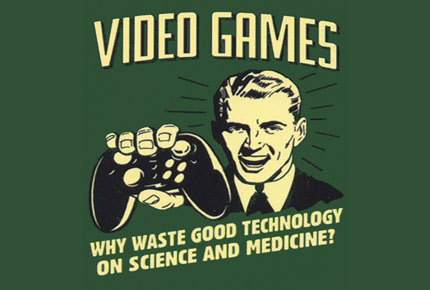
Hello everybody, it’s your friendly(?), everyday Gun Sage here ready to throw a new series in your face hole. Recently I’ve been getting a few Virtual Console titles here and there for my daughter, trying to teach her how to play videogames. She’s okay at some and terrible at others, but it got me thinking…what games are “must play” titles that she absolutely should not pass up?
Sure, there are plenty of terrible older games…some that are so terrible they have to be experienced just to see how terrible they are. But the thing is all she really knows about videogames so far is they don’t all look graphically alike, control alike, and we don’t play the same games. She literally knows nothing about Sega vs. Nintendo, the rise and fall of Final Fantasy, the same with Breath of Fire, what happened to survival horror, the same with adventure games…or just plain anything historical regarding videogames.
And sure, she’s only 6 and may not even give a damn, but surely there are titles I can think up that would at least give her a good idea of what the different eras of gaming were like and help develop a broad comparison of the yesteryear vs. today’s market. So then that got me thinking…though there are obvious titles that must be played, there are also some not so obvious titles that I feel ANY gamer should play, maybe not even necessarily all the way through, before they go down for their final game over.
With this series I will be as spoiler-free as possible, but like anything, there could still be spoilers. If there’s a game I mention that you’ve been meaning to play and you don’t want it spoiled, skim it, but don’t ruin it for yourself. I’ll be listing not only the games along with pics and youtube embeds, but also why I feel you should play them and possibly even how it impacted me as a gamer. Let’s get started!
Final Fantasy 6
Originally available on: Super Nintendo
Many have argued that FF6 is the best FF ever. I don’t agree to that, but it IS the best 16-bit FF. It’s a fine example of Squaresoft telling an excellent story, putting together a cast of excellent and memorable characters, displaying excellent maps and tilesets, crafting beautiful music, and in general throwing said characters into all kinds of grand and interesting situations.
The two most memorable story elements that I will never forget are the raft scene and the…rift scene. Let me explain. So there’s one scene where your heroes have to evade the empire and in doing so they hop onto a raft and get sent through a complicated and twisting cavern via white water rafting. There’s all kinds of treasure, enemies, and general peril.
But that’s not the part that gets me. No, shortly after you fight the boss, the raft breaks up and your heroes are separated. Now, Squaresoft could’ve just handled this similarly to what they did with FF4, where you have your main hero that it focuses on and you eventually collect your heroes back. Instead, they leave it up to you. There are three branching story arcs that eventually lead all heroes and new heroes they acquire back to the rebellion HQ.
They could’ve even just slapped this together, but no, they took time to really craft out excellent stories that told you more about the individual characters while also focusing on new areas, the empire in general, and the new characters you acquire in your fight against the empire. This was such a brilliant act of storytelling that I’ve not seen it again in gaming…until FF13…and they really mucked it up on that one.
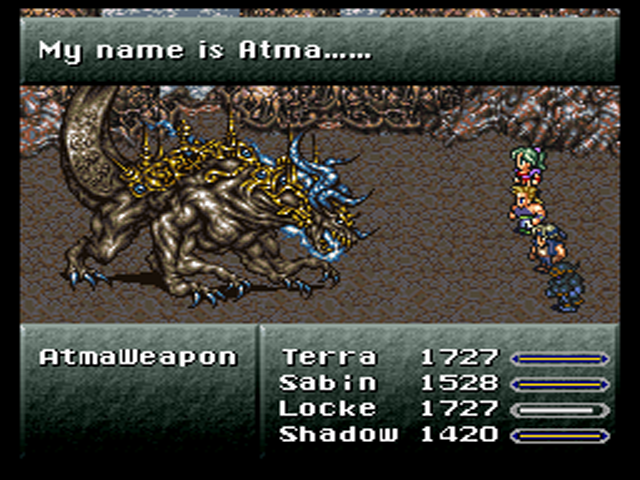
As far as the “rift scene,” well, at one point Kefka, an evil clown who has somehow risen to power in the empire, casts away the emperor and assumes grand power as he splits up the whole goddamn world and changes it into a post-apocalyptic world of ruin. Once again, everyone is split up, this time choosing to focus on one character like in FF4, but allowing you to go through and see all kinds of interesting backstory while also focusing on individual characters through acquisition and sidequesting.
Not only are there two whole worlds in this one as a result, but the new world is a very changed world and it’s not often in videogames, then or today, that you actually get to SEE the apocalypse, let alone are able to do anything about it. FF6 hits the nail on the head with this one in such a tremendous way. And of course, I’m not even bothering with different scenes like the opera house, phantom train, the veldt, or anything of that nature.
Truly, Final Fantasy 6 was an incredible title then and it’s still an incredible title now. Even if the future generation of gamers become total graphics snobs (and many are), they should still be able to appreciate the complex storytelling elements, character depth, and overall presentation in general.
Breath of Fire 3
Originally available on: Playstation
Initially, I ignored BoF3. Why? Well, the original was good and definitely different from the norm of RPGs at the time, but it wasn’t GREAT. BoF2 was pretty damn good despite having all kinds of odd engrish’d dialogue. However, I saw in Gamepro or something that it was just okay and I, putting my FULL TRUST in videogame magazines at the time, initially went on to ignore it.
Still, much like with F.3.A.R., I kept thinking “but wait, I liked the other ones, so maybe I should give it a shot.” And good goddamn am I glad I did. Also, fuck Gamepro actually. Breath of Fire 3 does not necessarily have the best story, but…well, let’s put it this way. Any game that can get you fired up, either by having you feel for the characters and what they’re going through, genuinely pissed at the villains, and continuously interested in what’s going to happen next is a game you must play.
Ah fuck it, I’ve said it before, but I’ll say it again. What I’m specifically talking about here is Balio and Sunder. Now there are other elements that make this game shine and I’ll go into them briefly, but all you need to remember about this game is Balio and Sunder. First off, the game starts with an excellent opener, gets you invested in characters like Teepo and Rei as well as their plight, makes you feel better about yourself when you resolve their conflict, then you feel just as unsure as they do when going after McNeil.
Then you know something’s wrong. You don’t know what, exactly, but you know that something’s wrong. So you go home and YOUR FUCKING HOUSE IS ON FIRE. MOTHERFUCKING BALIO AND SUNDER…or what I’ve come to call them more recently…THE BIGGEST BUTTERDICK ASSHOLE COLLECTION DEPARTMENT FROM HELL. These fuckers are big, stupid, mean, and just total assholes all over.
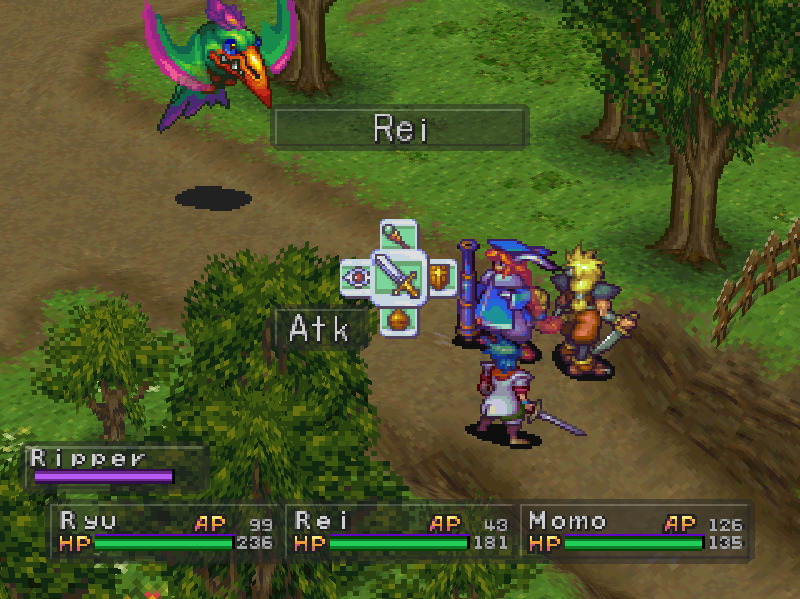
Not only do they fuck over your new life and friends, but then they send you on a seemingly endless chase where, like in any good RPG, you get awesome allies who are fleshed out surprisingly well for a Capcom title…and they run with you as you attempt to evade these maniacal motherfuckers, thus adding more fuel to the fire and putting more and more at stake as you just try to play a goddamn RPG while CONSTANTLY HAVING THE FEELING OF BEING CHASED.
Now when you break it down to a technical level, you’re not REALLY being chased. It’s not as though you’re on a timer or they’ll actually catch you if you don’t hurry up in certain parts. No, it’s all story driven, but it’s very clever all the same. You never feel like the action stops, but you also never feel like you’re pressured to hurry…and yet, you also feel like there’s no escape.
It was a brilliant play by Capcom that I felt Square-Enix ATTEMPTED in FF13, but again, failed miserably because they focused on the wrong aspects. I mean hell, Bof3 slows down almost too much when Balio and Sunder are finally dealt with for good. It almost has to backpedal itself into something more grand in order to recapture your attention. More often than not, I put about 5 to 10 more hours of my time into the game, then put it down.
There are other great aspects like the fairy village, having fights right on the field, better graphics and animation, having bombass music and awesome sound effects (it is Capcom after all), having to help a nerd stand up to a bully by training him to fight, learning from masters and distributing skills as well as changing HOW you level up by training under different masters…I mean, it’s all very complex, involved, and AWESOME.
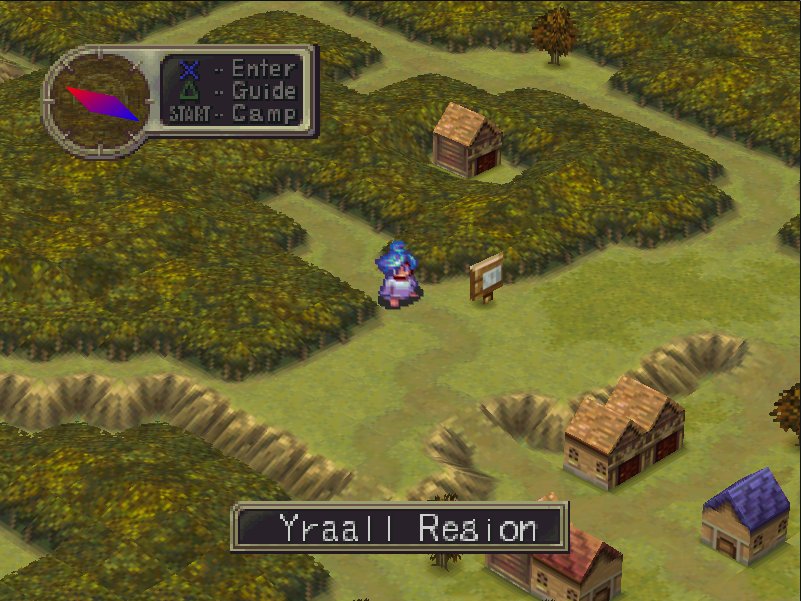
Breath of Fire 4 wasn’t too bad either, but I never played it very much. Don’t get me started on Dragon Quarter or why Capcom just doesn’t seem to give a fuck about their audience lately. These days, Capcom just leaves a bad taste in my mouth. It’ll take a lot for me to respect them again, especially after some of their more dumbass cancellations lately.
But yeah, 90s Capcom is where its at. And Breath of Fire 3 was right in the center of it.
Shin Megami Tensei – Persona 3 and 4
Originally available on: Playstation 2
Yes, I’m lumping them together. For starters, I’m sure most people have played these titles, but here’s why I’m saying you must play them. I’ll first start by saying I still genuinely believe there is no such thing as an impossible RPG. Hard, maybe. Challenging, yes. But impossible, no. This is why I say that. There was recently an RPG I took a crack at called Dual Orb 2 for the SNES.
Initially I felt it was impossible because only ONE character was actually able to do damage to enemies and the other characters kept getting knocked down. I found that I was playing it wrong. Now it’s all good. The same can be said for the Persona games. They’re not impossible, just hard. BUT…it’s hard RPGs that make playing RPGs worthwhile.
Look, I’ve harped on how some games are artificially hard to the point of being near unplayable and just plain being not fun. On the same token, if tweaked a bit, the same formula can end up being a very enjoyable experience. You might wonder what the fuck this has to do with Persona. Well, keep in mind that the original persona was first person and that the SNES Shin Megami Tensei games (which you probably haven’t played) were also from the first person perspective.
Just because you have a little dude running there on the screen doesn’t mean the core concepts and gameplay are truly any different. The MegaTen games have been around for a while, but I strongly believe that Persona 3 and 4 are the apex of them. I grouped both of them together because they’re effectively the same engine, but both games go about the story different and are slightly different from the technical perspective.
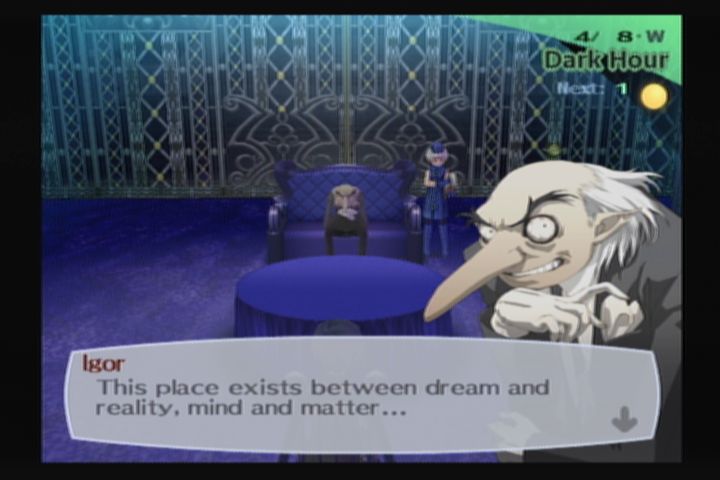
Initially I didn’t feel that Persona 4 was going to be able to top 3. And really, there are a lot of people that feel that the overall look and feel of 4 is so radically different from 3 that it makes it less…Persona-y…I guess. I don’t agree with this, but I understand the viewpoint. P3 is more of an emo’s game. It’s dark, there are very dark themes attached, and even in the more lighthearted moments of the game, they still manage to keep an atmosphere of tension throughout most of it.
P4 definitely has tense elements, but the overall graphical look and feel, despite having a story that’s still fairly dark at times, make it seem more like a teenybopper game at times. But honestly, I feel that’s what seals the deal. See, P3 was one of those kinds of games that as soon as you described it to someone, they would either become immediately interested or disinterested.
With P4, they weren’t quite sure what to think and would often check it out on their own time. Besides that, these are teenagers dealing with very adult situations. Yeah, things can be dark and depressing, but that’s “the other world.” What I mean is yeah, they’re dealing with some real shit, but they’re also dealing with living as a teenager, deveoping friendships, studying for finals, talking about going to college, bitching about their part-time jobs…the game never loses focus of this.
In the case of P3, this was SMT’s first attempt to try to do something like this. Honestly, I felt like it came out a little rough. Oh, it was a DAMN fine game and has elements that P4 simply doesn’t offer that make it more tense and intriguing, but the whole balancing a social life while beating up bad guys at night was still a little…odd. P4 makes it seem almost perfectly natural, as if there was no transition necessary.
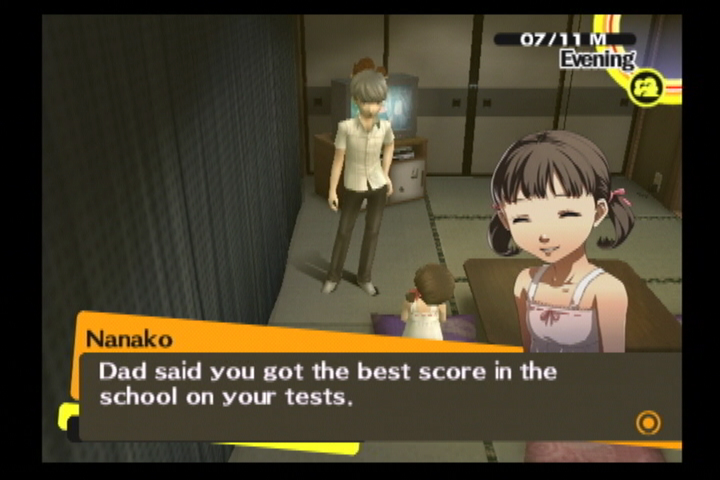
And of course, the individual stories, characters, character backstories, and so on are crafted very well. The production values for both games are pretty incredible, especially for being on the PS2. But again, I feel P4 was better from the character aspect. See, the story overall for P4 could be said as weaker than P3…but from an individual character developmental aspect…P3 doesn’t even come close.
Again, that’s probably because of how they structure the dungeons, with them revolving around the individual character and their own internal strife, rather than having them just be some big scary tower dungeon that isn’t explained at all…until probably some point very close to the end of the game. Even though I never got far enough to have the TV world explained to me in P4, it didn’t matter.
It was cool to get an introspective look at the individual characters, thoughts, and feelings…even if they were deliberately exaggerated. It kinda reminded me of Ar Tonelico, but that’s another article for another time. Regardless of which one’s your favorite of the two, I feel gamers owe it to themselves to experience both. And yes, the early Persona games were awesome too, but they’re in an entirely different league as well.
Conclusion
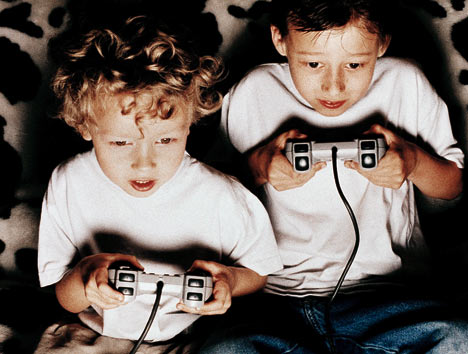
“Why does that chick keep shooting herself in the head to heal herself, bro?” “I dunno, mang. Should we have them study or beat the shit out of bad guys?”
The greatest tragedy would be if the current and next generations of gamers completely dismiss the older games as “a bunch of pong shit or whatever.” Sometimes it’s hard for me to even go back and play older PC and Atari titles that I missed, but I still make the effort. I feel that these games are still fairly easily accessible and awe-inspiring enough and in enough ways that any gamer, new and old, can appreciate them.



 July 10th, 2012
July 10th, 2012  gunsage
gunsage 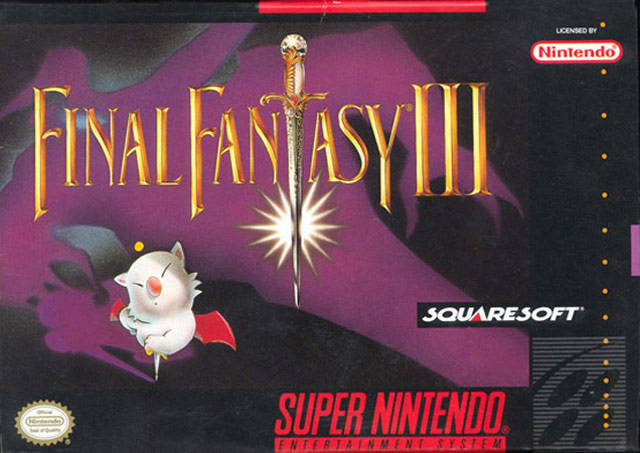
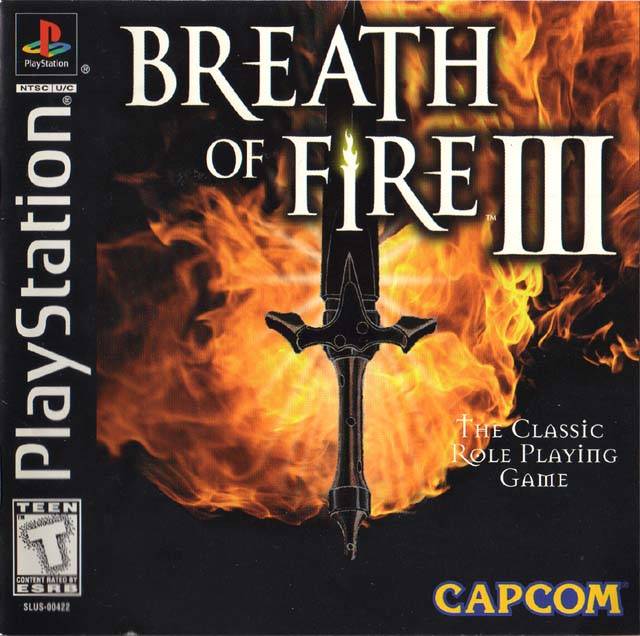
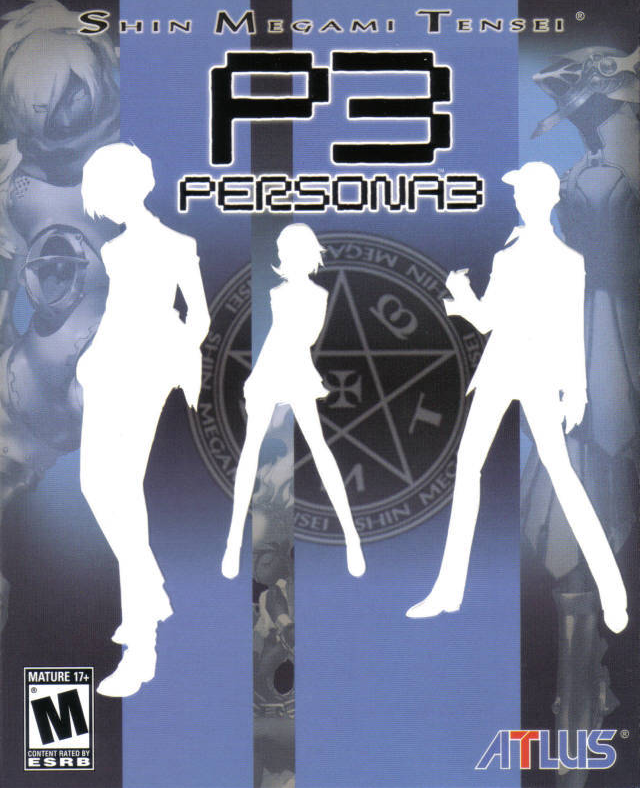
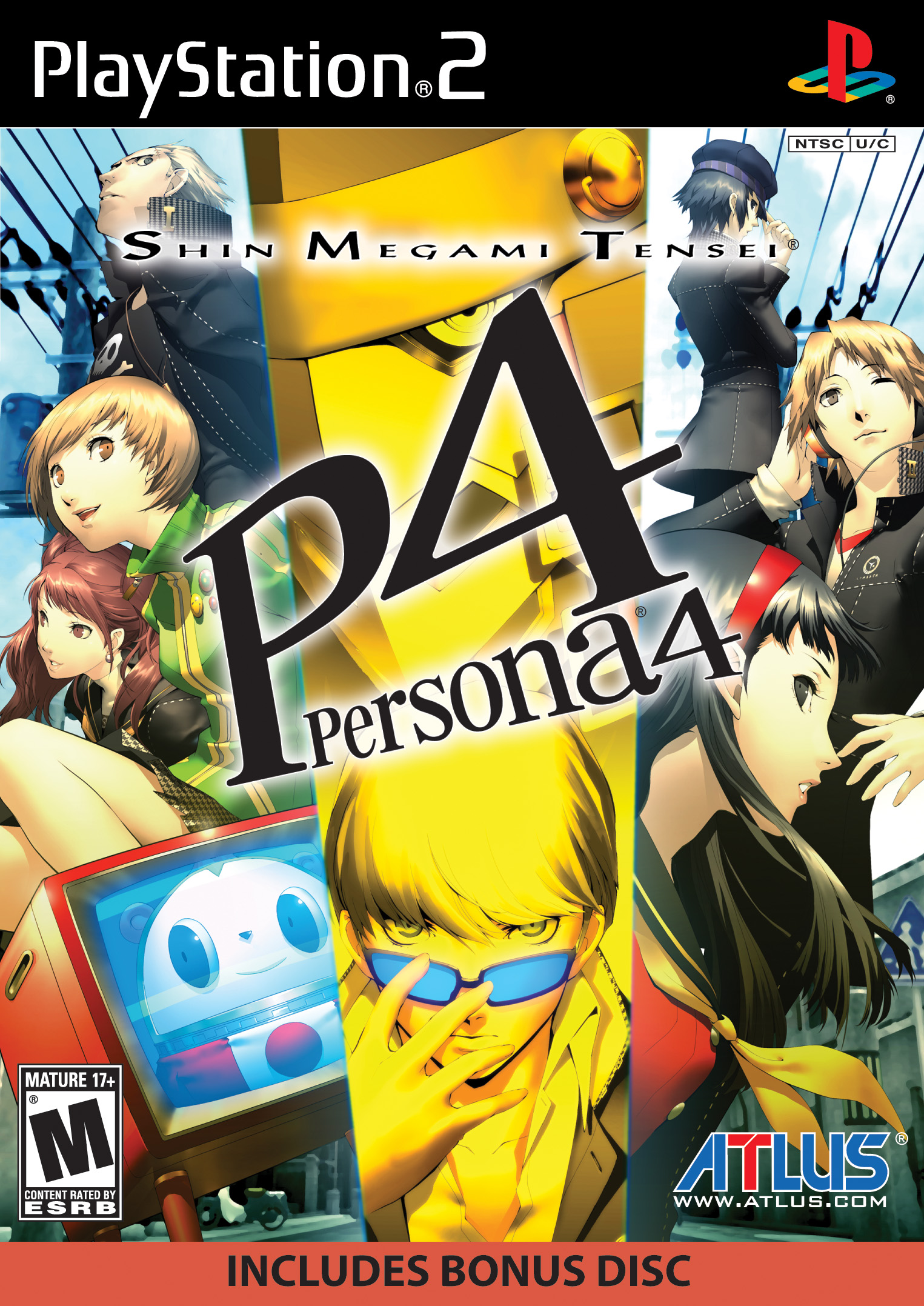
 Posted in
Posted in  Tags:
Tags:  Logging you in...
Logging you in... Loading IntenseDebate Comments...
Loading IntenseDebate Comments...
